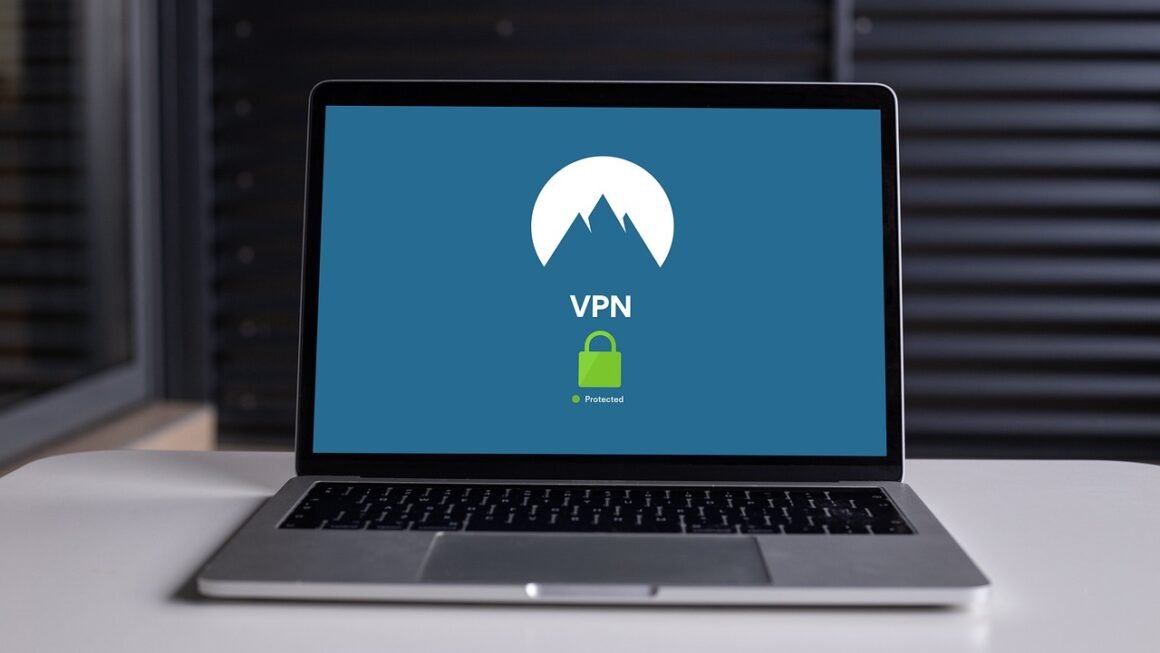Cyberattacks are no longer a question of “if” but “when.” In today’s digital landscape, organizations face a constant barrage of threats, from ransomware and phishing to data breaches and sophisticated malware. Simply defending against these attacks isn’t enough. Businesses need to be prepared to withstand, adapt, and recover quickly from inevitable cyber incidents. This is where cyber resilience comes in, transforming reactive security measures into a proactive and adaptable posture that ensures business continuity in the face of adversity.
Understanding Cyber Resilience
Cyber resilience is more than just cybersecurity. It’s a holistic approach to managing cyber risk, focusing on an organization’s ability to anticipate, withstand, recover from, and adapt to adverse conditions, stresses, attacks, or compromises to systems that use or are enabled by cyber resources. It ensures the organization continues to operate and deliver essential services even when under attack.
The Difference Between Cybersecurity and Cyber Resilience
While cybersecurity focuses on preventing attacks and protecting systems, cyber resilience acknowledges that breaches will happen.
- Cybersecurity: Aims to prevent unauthorized access, use, disclosure, disruption, modification, or destruction of information. It’s about building strong walls.
- Cyber Resilience: Assumes breaches will occur and focuses on minimizing the impact, recovering quickly, and learning from incidents to improve future defenses. It’s about building a fortress with multiple exits and the ability to rebuild quickly.
Think of it this way: cybersecurity is wearing a seatbelt, while cyber resilience is having airbags and knowing how to steer in a skid. Both are important for safety, but they address different aspects of risk.
Key Components of Cyber Resilience
Cyber resilience is built on several key pillars:
- Identification: Understanding your assets, vulnerabilities, and threats. What do you need to protect, and what are the risks to those assets?
- Protection: Implementing security controls to prevent or mitigate cyberattacks. This includes firewalls, intrusion detection systems, and endpoint protection.
- Detection: Identifying when a cyberattack is occurring. This requires robust monitoring and alerting capabilities.
- Response: Having a plan in place to respond to cyber incidents quickly and effectively.
- Recovery: Restoring systems and data to their pre-attack state as quickly as possible.
- Adaptation: Learning from cyber incidents and improving security controls to prevent future attacks.
These components work together to create a resilient security posture, allowing organizations to withstand and recover from cyberattacks more effectively.
Implementing a Cyber Resilience Strategy
Building a cyber resilient organization requires a well-defined strategy that aligns with business objectives and considers the specific risks faced by the organization.
Risk Assessment and Management
A thorough risk assessment is the foundation of any cyber resilience strategy.
- Identify critical assets: Determine which systems and data are most important to the organization’s operations.
- Assess vulnerabilities: Identify weaknesses in systems and processes that could be exploited by attackers.
- Analyze threats: Understand the types of cyberattacks the organization is likely to face.
- Evaluate impact: Determine the potential impact of a successful cyberattack on the organization’s operations, reputation, and financial stability.
- Develop mitigation strategies: Implement security controls to reduce the likelihood and impact of cyberattacks.
For example, a healthcare organization should prioritize the protection of patient data due to regulatory requirements and the potential for significant harm if the data is compromised. They should implement strong access controls, encryption, and regular security audits to mitigate the risk of data breaches.
Developing a Cyber Incident Response Plan
A well-defined incident response plan is crucial for minimizing the impact of cyberattacks.
- Define roles and responsibilities: Clearly outline who is responsible for each aspect of incident response.
- Establish communication protocols: Define how incident response team members will communicate with each other and with stakeholders.
- Develop procedures for incident detection, containment, eradication, and recovery: Provide step-by-step instructions for each phase of incident response.
- Regularly test and update the plan: Conduct tabletop exercises and simulations to ensure the plan is effective and up-to-date.
A financial institution might have a dedicated incident response team that includes cybersecurity experts, legal counsel, and public relations professionals. Their incident response plan should detail how to contain a ransomware attack, isolate infected systems, and restore data from backups.
Investing in Security Technologies
Investing in appropriate security technologies is essential for protecting systems and data.
- Endpoint Detection and Response (EDR): Provides advanced threat detection and response capabilities on endpoints.
- Security Information and Event Management (SIEM): Collects and analyzes security logs from various sources to identify suspicious activity.
- Vulnerability Management: Identifies and remediates vulnerabilities in systems and applications.
- Multi-Factor Authentication (MFA): Requires users to provide multiple forms of authentication, making it more difficult for attackers to gain access to accounts.
- Data Loss Prevention (DLP): Prevents sensitive data from leaving the organization’s control.
For example, a retail company could implement DLP to prevent customer credit card data from being accidentally or maliciously leaked. They could also use EDR to detect and respond to malware infections on point-of-sale systems.
The Business Benefits of Cyber Resilience
Implementing a strong cyber resilience strategy offers significant business benefits beyond simply reducing the risk of cyberattacks.
Enhanced Business Continuity
Cyber resilience ensures that organizations can continue to operate even when under attack.
- Reduced downtime: Minimizing the time it takes to recover from cyber incidents.
- Improved service delivery: Maintaining critical business functions and services during and after an attack.
- Enhanced customer satisfaction: Ensuring customers can continue to access products and services without interruption.
A manufacturing company with a robust cyber resilience plan can quickly restore production lines after a ransomware attack, minimizing disruption to their supply chain and ensuring they can meet customer orders.
Improved Reputation and Trust
Demonstrating a commitment to cyber resilience can enhance an organization’s reputation and build trust with customers, partners, and stakeholders.
- Increased customer confidence: Customers are more likely to do business with organizations that they trust to protect their data.
- Stronger partnerships: Partners are more likely to collaborate with organizations that have a strong security posture.
- Enhanced brand image: Being seen as a security-conscious organization can improve brand reputation.
A software company that publicly discloses its cyber resilience efforts and demonstrates a commitment to protecting user data can attract more customers and partners.
Reduced Financial Impact
While investing in cyber resilience requires upfront costs, it can significantly reduce the financial impact of cyberattacks in the long run.
- Reduced costs associated with data breaches: Minimizing the financial losses resulting from data breaches, including fines, legal fees, and reputational damage.
- Lower insurance premiums: Organizations with strong security postures may be eligible for lower cyber insurance premiums.
- Reduced business disruption: Minimizing the financial losses resulting from business downtime.
An e-commerce company that invests in proactive cybersecurity and incident response capabilities can reduce the likelihood and impact of a data breach, saving potentially millions of dollars in fines, legal fees, and lost revenue.
Measuring Cyber Resilience
Measuring cyber resilience is essential for tracking progress and identifying areas for improvement.
Key Performance Indicators (KPIs)
Organizations should define KPIs to track their cyber resilience progress.
- Mean Time to Detect (MTTD): The average time it takes to detect a cyberattack.
- Mean Time to Respond (MTTR): The average time it takes to respond to and contain a cyberattack.
- Percentage of systems patched: The percentage of systems that are up-to-date with the latest security patches.
- Employee security awareness training completion rate: The percentage of employees who have completed security awareness training.
- Number of successful phishing simulations: The number of employees who successfully identified and reported phishing emails during simulations.
Maturity Models
Cyber resilience maturity models can help organizations assess their current level of resilience and identify areas for improvement.
- NIST Cybersecurity Framework: A widely recognized framework for managing cybersecurity risk.
- Cyber Resilience Review (CRR): A self-assessment tool developed by the Department of Homeland Security.
- CERT Resilience Management Model (RMM): A comprehensive model for managing organizational resilience.
By regularly monitoring KPIs and assessing their maturity level, organizations can continuously improve their cyber resilience posture.
Conclusion
Cyber resilience is no longer optional; it’s a necessity for organizations operating in today’s threat landscape. By understanding the principles of cyber resilience, implementing a comprehensive strategy, and continuously measuring progress, organizations can protect themselves from the devastating consequences of cyberattacks and ensure business continuity. Embracing cyber resilience is an investment in the future, safeguarding your operations, reputation, and financial stability in an increasingly interconnected and vulnerable world. The time to act is now: assess your vulnerabilities, fortify your defenses, and build a resilient organization ready to face any cyber challenge.



